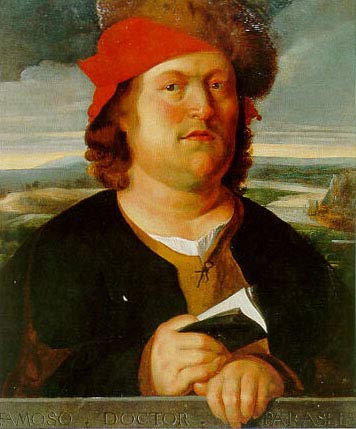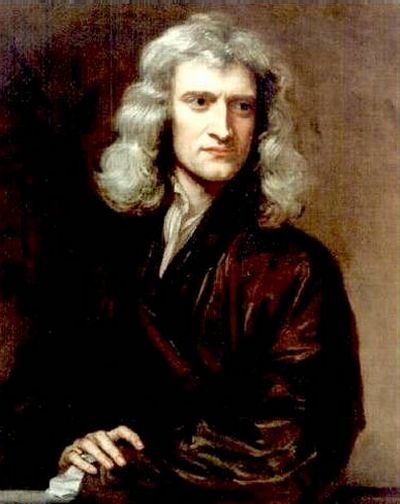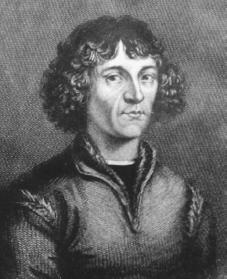Nationality: French
Historical Background: Lived during the time of the 30 years war, Glorious Revolution, and during the time of Louis X1V
His philosophy dominated the world until the 20th century. Postulated that there was a separation between the mind and matter (mind and body)
Published: Discourse of Method
Saturday, October 30, 2010
Women During the Scientific Revolution
In the middle ages woman were socially ineligible to seek a life of learning. Though, in the late 14th and 15th centuries humanism began to encourage learning for all elite (including women).
Margaret Cavendish (1623-1673)
Social Class: Aristocrat, Duchess of Newcastle
Published: Experimental Philosophy and Grounds of Natural Philosophy
She criticized the growing idea that through science, humans would be able to be masters of the universe.
Unlike France and England, who discouraged women' interest in science, 1/7 of the astronomers in Germany were women.
Maria Merian (1647-1717)
Nationality:German
Social class: aristocratic
She undertook an expedition to collect and draw samples of plant and insect life. This led to her work Metamorphosis of the Insects of Surinam". The book showed the reproductive and developmental cycles of insects.
Maria Winkelmann (1670-1720)
She was a female astronomer who discovered the comet Hitherto
The nature and value of women had been the subject of an ongoing, centuries-long debate, known as the querrelles des femmes (argument about women)
An important project in anatomy during the scientific revolution was the attempt to illustrate the human body and skeleton. What was found was that females had smaller skeletons (specifically smaller heads) then men and that reaffirmed their social inferiority. Why is that so?
Women----->>>> They were found to have smaller yet bigger pelvic areas than men, which reaffirmed that womens' sole purpose were, by God and now by nature, to bear children; not to be smart intellectuals
Men------>>> They were found to have smaller pelvic areas and bigger skulls. This was interpreted as males having bigger brains altogether smarter than women.
Random Info : Scientific Revolution deteriorates midwife positions.
Margaret Cavendish (1623-1673)
Social Class: Aristocrat, Duchess of Newcastle
Published: Experimental Philosophy and Grounds of Natural Philosophy
She criticized the growing idea that through science, humans would be able to be masters of the universe.
Unlike France and England, who discouraged women' interest in science, 1/7 of the astronomers in Germany were women.
Maria Merian (1647-1717)
Nationality:German
Social class: aristocratic
She undertook an expedition to collect and draw samples of plant and insect life. This led to her work Metamorphosis of the Insects of Surinam". The book showed the reproductive and developmental cycles of insects.
Maria Winkelmann (1670-1720)
She was a female astronomer who discovered the comet Hitherto
QUERELLES DES FEMMES
The nature and value of women had been the subject of an ongoing, centuries-long debate, known as the querrelles des femmes (argument about women)
An important project in anatomy during the scientific revolution was the attempt to illustrate the human body and skeleton. What was found was that females had smaller skeletons (specifically smaller heads) then men and that reaffirmed their social inferiority. Why is that so?
Women----->>>> They were found to have smaller yet bigger pelvic areas than men, which reaffirmed that womens' sole purpose were, by God and now by nature, to bear children; not to be smart intellectuals
Men------>>> They were found to have smaller pelvic areas and bigger skulls. This was interpreted as males having bigger brains altogether smarter than women.
Random Info : Scientific Revolution deteriorates midwife positions.
William Harvey (1578-1657)
Published: On the Motion of the Heart of Blood
Discovery: Through his studies of the circulation of the blood at Cambridge University he discovered that the beginning point of the circulation of the blood was in the heart (not the liver like Galen had postulated). He also discovered that the same blood flows in the arteries and vessels and completes a circuit in the body. Harvey's theory of the circulation of the blood laid the foundation for modern physiology.
Discovery: Through his studies of the circulation of the blood at Cambridge University he discovered that the beginning point of the circulation of the blood was in the heart (not the liver like Galen had postulated). He also discovered that the same blood flows in the arteries and vessels and completes a circuit in the body. Harvey's theory of the circulation of the blood laid the foundation for modern physiology.
Andreas Vesailus (1514-1564)
Published: On the Fabric of the Human Body
Emphasized practical research to the understanding of the human anatomy. His hands on (first-hand) research made it easily proven that his ideas were right (and that Galen's once widely accepted ideas upon physiology were wrong). Galen discovered that blood vessels were connected to the heart (undermining the accepted Galen idea that the vessels were connected to the liver).
Emphasized practical research to the understanding of the human anatomy. His hands on (first-hand) research made it easily proven that his ideas were right (and that Galen's once widely accepted ideas upon physiology were wrong). Galen discovered that blood vessels were connected to the heart (undermining the accepted Galen idea that the vessels were connected to the liver).
Monday, October 25, 2010
Welcome
Welcome! My name is Kenji Peeps and I created this blog to help me and others study European history. Click on the notes portion to view all the notes I have posted thus far. Scroll to the very bottom of the page to select specific people or historical events.
Isasc Newton (1642-1727)
Country: England
School: Cambridge University
Invented: Calculus
Published: Prinicipia
Contents: Newton spelled out the mathematical proofs demonstrating his universal law of gravitation. Newton's work culminated Copernicus', Kepler's, and Galileo's ideas.
Accomplishments: Became president of the Royal Society
Significance: Newton had demonstrated that one universal law, mathematically proved, could explain all motion in the universe. The universe was now seen by many as an uniform machine.
School: Cambridge University
Invented: Calculus
Published: Prinicipia
Contents: Newton spelled out the mathematical proofs demonstrating his universal law of gravitation. Newton's work culminated Copernicus', Kepler's, and Galileo's ideas.
Accomplishments: Became president of the Royal Society
Significance: Newton had demonstrated that one universal law, mathematically proved, could explain all motion in the universe. The universe was now seen by many as an uniform machine.
Galileo Galilei (1564-1642)
Galileo was the first European to make systematic observations of the heavens by means of the telescope. Don't get confused. he DID NOT invent the telescope. The telescope had previously been invented to look at far distances on Earth (particularly for war purposes). By using the telescope Galileo seemed to destroy yet another aspect of the traditional thought that the universe was composed of material substance similar to that of the Earth (which indeed it wasn't). These new findings were published in his book, The Starry Messenger. In the book Galileo also revealed his advocacy to the heliocentric theory made by Copernicus. Galileo was a friend of the Pope and so he was commissioned to write a book which content focused on the debate between the Copernicus theory and the Ptolemaic theory. Though, in the debate (in the book) the Copernican theory was greatly defended and it was made obvious who won the argument. Galileo was soon after placed upon house arrest. Galileo also made contributions to the problem of motion. He discovered inertia which stated tat an object in motion stays in motion unless acted upon by an outside force.
Johannes Kepler (1571-1630)
Johannes Kepler was the assistant of Tycho Brahe. Obviously after Brahe's death Kepler assumed the position of imperial mathematician t Emperor Rudolph the second. He also, was able to assume ownership of Brahe's (20 year) research. Unlike many Kepler had a profound interest in Hermetic mathematical magic. He believed that the universe was based upon geometric figures. After gaining Brahe's research Kepler arrived at three laws of planetary motion. The importance of these laws is that it further confirmed Copernicus' heliocentric theory.
LAWS
1. The planets orbits around the sun were elliptical (not circular how Copernicus had postulated)
2.The speed of a planet is greater when it is closer to the sun (this undermined the Aristotelian idea that the motion of all the planets were steady and unchanging).
3. The smaller the orbit the faster the revolution
After the motion of the universe was solved by Tycho Brahe a new question was posed :
How does one explain motion?
learn more from Galileo>>>>>>
Tycho Brahe (1546-1601)
Tycho Brahe was granted possession of an island. There, Brahe created a library and most importantly an observatory where he conducted 20 years of astronomical observation. He compiled detailed records of his observations of the motion of the stars and planets. In last few years of his life he was positioned as the imperial mathematician of Emperor Rudolph the second.
Nicolaus Copernicus (1473-1543)
He was a mathematician. Copernicus hoped that his heliocentric or sun-centered conception would offer a simpler and more accurate explanation. Copernicus argued that there were eight spheres with the sun motionless at the center . Copernicus was conservative and did not reject Aristotle's principle of the existence of heavenly spheres moving in CIRCULAR ORBIT. Copernicus's ideas seemed to undermine the church. Protestant reformers, adhering to literal interpretation to the bible attacked the new ideas (even Martin Luther went against him). He is most famous for his book On the Revolutions of the Heavenly Spheres.
Subscribe to:
Posts (Atom)














